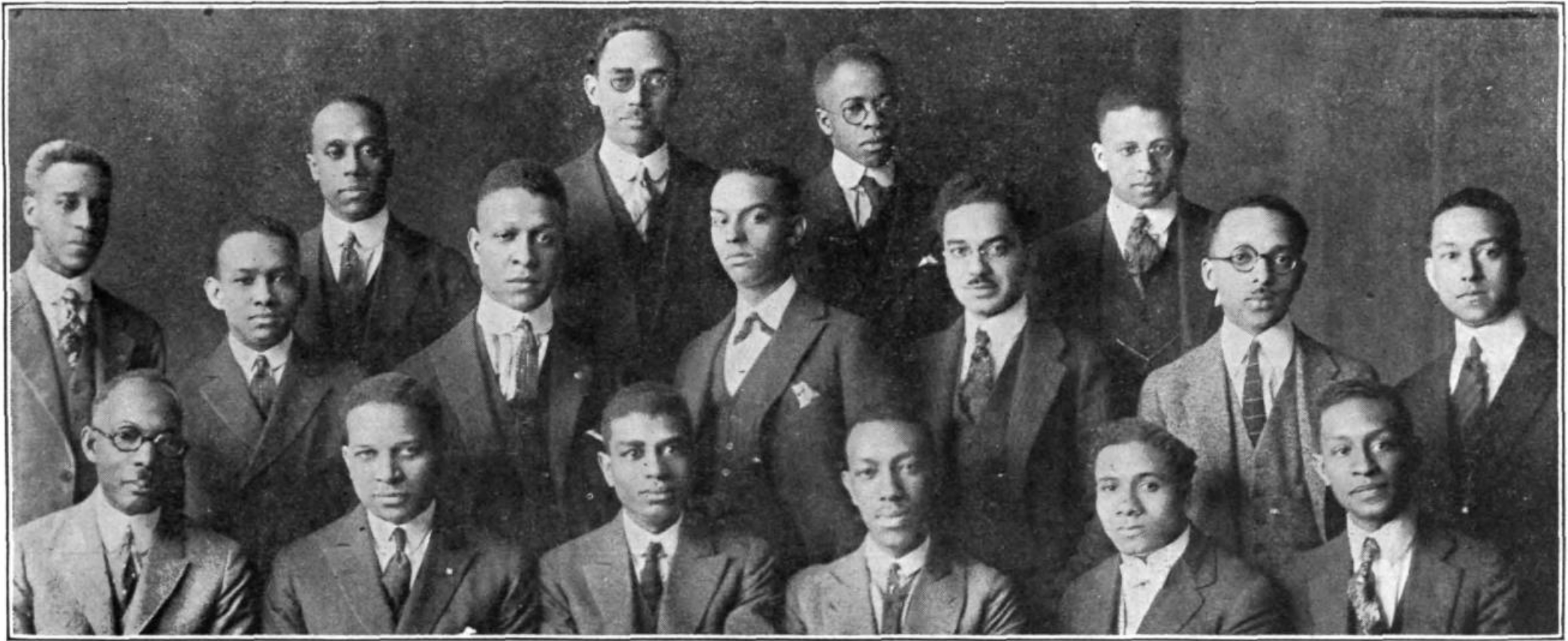Pi is a Cleveland-centered chapter of Alpha Phi Alpha, the oldest extant AFRICAN AMERICAN intercollegiate fraternity. For the first few decades of its existence, it was one of the largest and most influential chapters in the fraternity.
In the 1900s, the Black student body in American colleges was slowly, but steadily, growing. While the majority of this growth was at Historically Black institutions like Fisk, Howard, or Tuskegee, a growing number of Black students, aspiring to form the core of an expanding, professional ‘Black Middle Class’, were successfully enrolling and graduating from legally integrated Northern Schools. At such institutions, however, Black students often found themselves socially isolated from their classmates, and thus forced to develop their own, informally segregated equivalents of White social organizations. Such was the background of Alpha Phi Alpha, which started as a reading club at Cornell University before expanding to become a fraternity in 1906. These institutions, acutely aware of the societal conditions within which they were formed, often supported goals beyond their mere sustenance as social or professional groups. Envisioning themselves as representatives of the ‘talented tenth’, term for the college-educated, middle-class ‘Black elite’ coined by W.E.B. Dubois, Alpha Phi Alpha’s founders declared their job to be general ‘racial uplift’ and leadership.
The Pi Chapter of Alpha Phi Alpha was founded in 1914 by students at Western Reserve University and Case School of Applied Science (both have since merged into CASE WESTERN RESERVE UNIVERSITY) with the help of the fraternity’s fifth president, Henry L. Dickason. It was the 17th chapter founded, and the third-such in Ohio after Kappa (Ohio State, 1910) and Xi (Wilberforce, 1912). Among its founding members were ARMEN G. EVANS, who would later become a pediatrician in Cleveland, and DANIEL D. FOWLER, who would graduate Case second in his class, then serve as the fraternity’s ninth president (1919-1920) before his untimely death at 27. In 1916, the fraternity recruited PERRY B. JACKSON, who would serve as chapter president from 1918 to 1919. He would go on to be the first African American elected as a municipal judge in Ohio. During the 1920s, the chapter seems to have reached its greatest prominence within the fraternity, hosting some of its annual conventions. The number of Black students, especially at Western Reserve University, ballooned during the 1920s, increasing the number of chapter members. By 1923, there were nearly 50; the next year, Pi would expand to Akron and Oberlin.
Following the ideological goals of the fraternity, the Pi Chapter took a strong interest in community outreach to local Clevelanders, and the encouragement of higher education. Members of this chapter thus initiated the “Go to Highschool, Go to College!” initiative, first envisioned by fraternity member Howard H. Long in 1916. The goal of this campaign, as told by chapter president Raymond S. Jackson, was to take “a more active interest in the high school graduates that they may be shown the advantage of continuing their schooling”. Though this program was only officially launched in 1922 under the directorship of chapter member Albert L. Turner, early iterations of it were active as early as 1919. The program is still run today and offers mentorship, guidance, and networking opportunities to Black youth in 25 cities
.
Justin Evans


